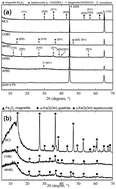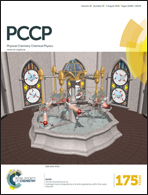The use of multiple pseudo-physiological solutions to simulate the degradation behavior of pure iron as a metallic resorbable implant: a surface-characterization study
Abstract
Understanding the interactions of a pure iron surface with biological elements, such as ions and proteins in an aqueous medium, is essential for an accurate in vitro assessment of corrosion patterns. In fact, the synergy of chlorides, carbonates, phosphates and complex organic molecules present in the body environment is a key factor affecting both in vivo and in vitro degradation of materials, especially iron and its alloys. The aim of this work was the assessment of degradation patterns of pure iron in 5 commercial pseudo-physiological solutions by a thorough study of degraded surface chemistry and morphology. It also provides a methodological basis to understand the short-term degradation mechanism of degradable iron depending on the surrounding physiological media. The standard static immersion corrosion test was modified to adapt the procedure to pseudo-physiological solutions. After a 14-day static immersion test, the surfaces of samples were investigated by scanning electron microscopy, stylus profilometry and atomic force microscopy techniques. The chemistry and phase composition of the degraded layers were evaluated, respectively, by X-ray photoelectron spectrometry and X-ray diffractometry. The morphology and composition of the degradation layers were found to be different for the test-solutions: for phosphate-rich solutions, the formation of an adherent passive layer was found; degradation mechanisms related to general corrosion were predominant for all the other solutions. In conclusion, the chemical composition of the used medium plays a fundamental role in the degradation pattern of pure iron, so that direct comparisons of solutions with different ion concentrations, as reported in the literature, need to be carefully assessed.


 Please wait while we load your content...
Please wait while we load your content...